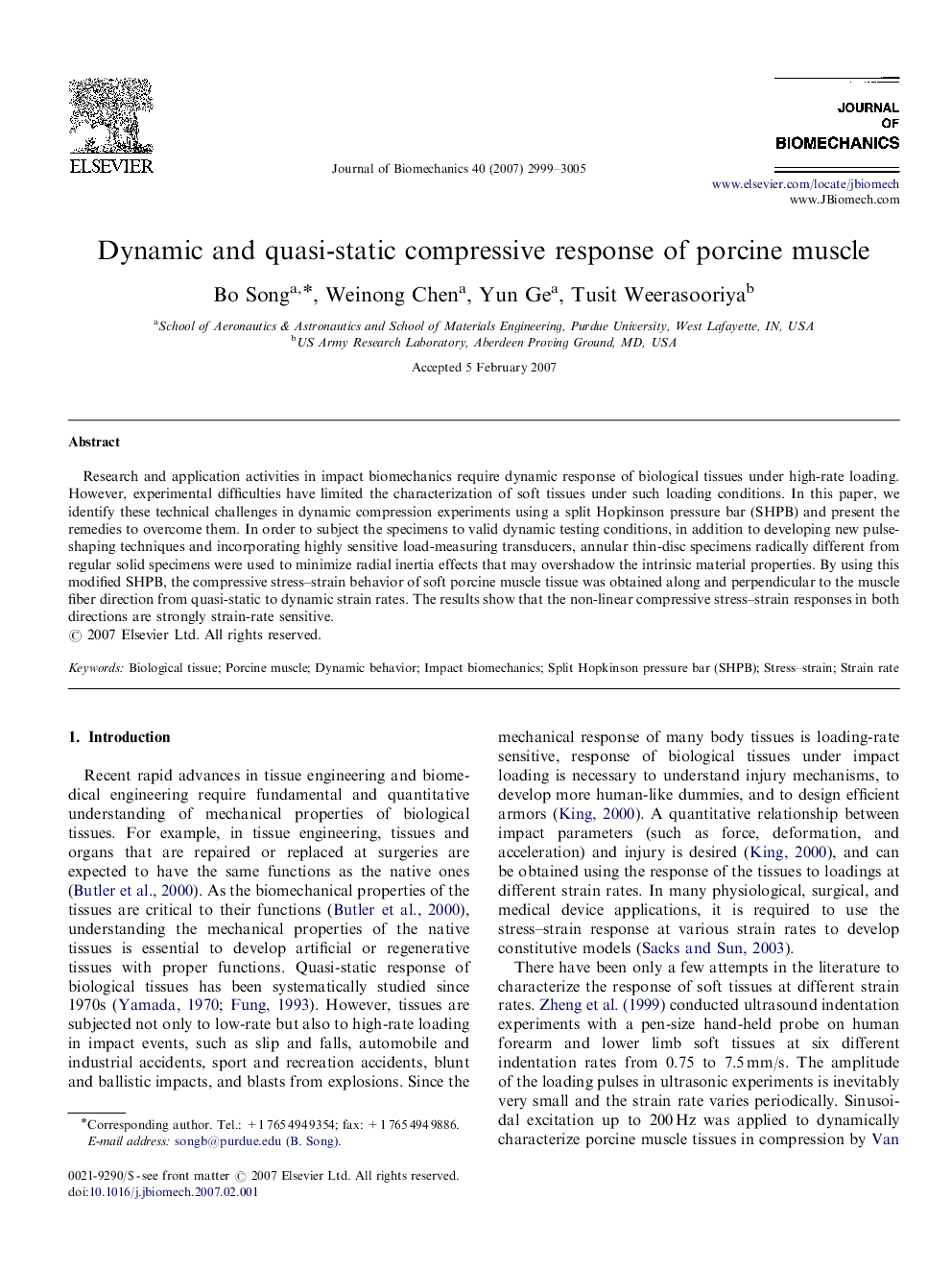| Article ID | Journal | Published Year | Pages | File Type |
|---|---|---|---|---|
| 874251 | Journal of Biomechanics | 2007 | 7 Pages |
Research and application activities in impact biomechanics require dynamic response of biological tissues under high-rate loading. However, experimental difficulties have limited the characterization of soft tissues under such loading conditions. In this paper, we identify these technical challenges in dynamic compression experiments using a split Hopkinson pressure bar (SHPB) and present the remedies to overcome them. In order to subject the specimens to valid dynamic testing conditions, in addition to developing new pulse-shaping techniques and incorporating highly sensitive load-measuring transducers, annular thin-disc specimens radically different from regular solid specimens were used to minimize radial inertia effects that may overshadow the intrinsic material properties. By using this modified SHPB, the compressive stress–strain behavior of soft porcine muscle tissue was obtained along and perpendicular to the muscle fiber direction from quasi-static to dynamic strain rates. The results show that the non-linear compressive stress–strain responses in both directions are strongly strain-rate sensitive.
